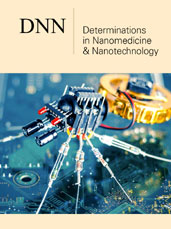Opinion on Nanoparticles for Cancer Remediation by Ahmed M Abu Dief * in Determinations in Nanomedicine & Nanotechnology_ Journal of Nanotechnology

Abstract
Since
the innovation of nanomedicine decades ago, significant advances have been
made, especially with cancer as an objective. Nanoparticles in cancer
remediation intends to cover different important aspects in this field
including development of nanocarrier, delivery of gene, intrinsically active
nanoparticles (NPs), microenvironment of tumor, toxicity, and immunology. The
mostly applied biocompatible nanocarriers in clinical experiments are lipid,
polymer, and protein-based materials. Polymeric micelles are a common
type of nanocarriers for drug delivery due to their multifunctionality,
controllable release, and biocompatibility. Doxorubicin as a model drug was
successfully loaded into the micelles and presented a complete and rapid drug
release at pH=5.0. The drug loaded NPs had high anti-tumor activity to kill the
cancer cells but minimum toxicity to ordinary cells. Targeting dendritic cells
(DCs) by nanotechnology attitudes as a promising delineation for immunotherapy
of cancer. The physicochemical properties of NPs effects on their interactions
with DCs, thus modifying the immune outcome of DCs by changing their functions
in the processes of antigen, homing, maturation processing, and presentation of
antigen. The microenvironment of tumor plays a pivotal role in adjusting
distribution of nano-chemotherapeutics and their biological effects.
Nanotechnology has also shown different advantages over widely used
conventional methods in uro-oncology. For example, different types of NPs
enhance the solubility of poorly soluble drugs, and multifunctional NPs have
good specificity toward bladder, renal, and prostate cancer. Moreover,
nanotechnology can also merge with other novel technologies to further enhance
efficacy. As our understanding of nanotechnologies grows, extra opportunities
to enhance the treatment and diagnosis of urological cancer are expected to
arise. As attention of the toxicity of nanomaterials are growing, a safety
estimation becomes a routine assessment nowadays as a necessary for
nanomedicine. In recent years, nanotechnology has shown many advantages over
traditional approaches for cancer prevention, diagnosis, and treatment, and
clinical trials are being implemented every year. However, challenges are still
overwhelming especially in human experiments, regulatory, and formulation
issues. With new advancements in biology, nanoscience, materials chemistry, and
medicine, one can envision that devastating cancer will be curable some day
and, in that achievement, the nanoscale approaches will have played an
important role
https://crimsonpublishers.com/dnn/fulltext/DNN.000524.php
Crimson
Publishers: https://crimsonpublishers.com/
For more articles in Journal of Nanotechnology,
Please
click on below link: https://crimsonpublishers.com/dnn/



No comments:
Post a Comment